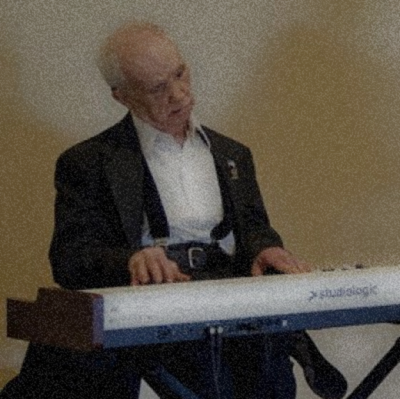_____
Transcending the Blues
by Matt Sweeney
Mac’s Restaurant and Nightclub in Eugene, Oregon is where the blues aficionados in Central Oregon congregate to enjoy Cajun type bar food and dance joyously to pounding, power guitar driven blues. Our friends Alan and Susan go there a couple times a month to satisfy their boogie dance cravings. Whenever my wife and I pass through Eugene, we end up at Mac’s with Alan and Susan. They also attend a lot of blues festivals around their neck of the woods and can be considered connoisseurs.
I too love the blues. I also love jazz. Susan loves the blues. She does not love jazz, “modern” jazz to be specific. Susan explains that when she’s dancing at Mac’s, she feels the pounding bass and drums and screaming vocalist and Fender Stratocaster vibrating her bones and muscles and eyeballs. That’s her heaven. That’s how she wants to experience the blues. She does not “understand” jazz — too cerebral, it’s not visceral, and “you can’t feel it.”
I don’t argue. I’m glad we can share the blues at Mac’s. Neither Susan or anyone else can be persuaded to like jazz (or Wagner, or Edgar Varese, or Tom Waits) by some pedantic lecture. But our conversation started me thinking about jazz and how it relates to the blues – random thoughts like: What about jazz performances that blast and vibrate your bones, muscles, and eyeballs? Think Art Blakey and the Jazz Messengers, John Coltrane, Kenny Garrett, or Wallace Roney when they are tearing the roof off…
How about John Coltrane’s “Chasin’ the Trane,” a blues recorded live at the Village Vanguard on November 2, 1961 with bassist Jimmy Garrison and drummer Elvin Jones? This overwhelming performance is an example of how a trio of musical geniuses (don’t get me started about Coltrane), playing at the peak of their careers, can take a 12-bar blues and transfigure it into a frenzy of roaring, torrential joy. It doesn’t get any more visceral than that.
The driving, ferocious power of his 16-minute performance is the very essence of Susan’s love of hard-hitting blues. But the other aspects of his playing on this tune would leave her bewildered and angry. Coltrane stretches the limits of his tenor sax, producing atonal honks, screams and dizzying stacks of notes (his “sheets of sound”) that make some in the audience double over and cringe, while others raise their arms and laugh with joy. The tune has no beginning, kicking off like the trio has been already playing furiously for ten minutes when someone suddenly switches on the sound, and the end is almost as abrupt, with only a drum roll and a sustained note at the end of the last chorus.
But it is a blues. You can hear the chord changes from Jimmy Garrison, even though there is no piano to make the progression obvious (McCoy Tyner laid out for this piece). Jimmy Garrison also helps in marking the beginning and end of the choruses. Coltrane, of course, seems to ignore the choruses and he surpasses the chord changes. The point is that the most gifted jazz musicians’ ability to transform a blues into musical experience way beyond its very simple three-chord structure is what makes jazz so satisfying, both in your gut and in your intellect.
There are other more extensive treatises on “Chasin’ the Trane”, including the comprehensive liner notes by David Wiles on the Impulse’s Complete 1961 Village Vanguard Recordings and Ronan Guilfoyle’s blog Mostly Music, but you get the idea.
Or how about another transcendent blues with a very different mood, a piece called “Balcony Rock” from the album Jazz Goes to College by the Dave Brubeck Quartet, recorded live at the Universities of Oberlin, Cincinnati, and Michigan in 1954. This performance is poles apart from the fiery “Chasin’ the Trane” and would be judged by Susan to be too cerebral. But it illustrates again how a musical genius can travel way beyond the blues chord structure. The quartet then included Dave, Paul Desmond, of course, on alto, Joe Dodge on drums, and bassist Bob Bates. (Joe Dodge was later replaced by the incredible Joe Morello. Dodge was less dexterous, but much warmer than Morello, content to be the driving sideman and not concerned with the spotlight. He got along a lot better with Desmond.)
“Balcony Rock” is, again, a twelve-bar blues, which at that time the quartet rarely played, preferring the more complex chord changes of standards. But it never sounds like a blues. Except for a few measures of funk that Brubeck, in a flippant moment, includes somewhere near mid-point of the twelve-minute performance of the tune, and which draws appreciative laughter from the audience because of its surprising incongruity, the soaring exploration of melodies and harmonies goes way beyond any blues I had ever heard when I discovered the recording at age 15. Its initial effect on me was joy and wonder, and its effect on me has not diminished over the years. Like Barber’s Adagio for Strings or Mahler’s “Adagietto” from Symphony No. 5, its emotional impact never diminishes. (Yes I know, you’re saying the citations are pretentious, but I bet you’ve heard them. Check them out and see what I mean.)
From the tentative, “ding dong, hello, anybody home?” opening to the serenely beautiful closing melody, this is a fully realized and amazingly beautiful composition. Desmond’s and then Brubeck’s solos are crafted spontaneously, of course, but their attachment to and empathy with each other is total. Each performs a series of passages that, in turn, build tension, deliver crescendo, and release you with resolutions that make you catch your breath, using gorgeous, but never flowery or cloying chords and eloquent linear melodic arcs that bring to mind Bach’s “Aria” from the Suite in D Major. And throughout, Bates and Dodge maintain the underlying pleasure of the 12-bar structure and, even better, that most essential component of a jazz performance: it swings with a laid back, loping 4/4 groove.
But even though the 12-bar structure is respected, the solos of Brubeck and Desmond rise way above the structure – the ideas started in one chorus do not end and start with each new chorus. An improvisational idea continues beyond the 12-bar chorus break points, extending, aria like, for three or four choruses.
George Avakian, the producer of Jazz Goes to College, describes “Balcony Rock” more thoroughly and eloquently than I have been able to do, but you have to get the CD to read it. I suggest you do just that because even better than the liner notes is the performance itself.
I think I’ll send Susan a copy.
_____

Matthew Sweeney is a retired civil engineer who spent the days of his career building airports and highways in cities and outbacks throughout Europe, Asia, Africa, and the Middle East. He spent his nights in those places, not to mention places like Greenwich Village, midtown Manhattan, the French Quarter, Cajun Country and Austin searching for compelling music. Currently, he lives in South Pasadena, California and travels around with his wife Sue looking for the same kind of excitement.
*
“Chasin’ the Trane”
“Balcony Rock”








































Wow really:makes me want to give jazz another chance. I’ll be looking for vinyl on these pieces. Thanks for insight and passion.
Wow really:makes me want to give jazz another chance. I’ll be looking for vinyl on these pieces. Thanks for insight and passion.
Insightful article!
It’s fascinating to learn what Miles Davis is technically doing as he plays around with a blues, as in your example. I’ve never been a big fan because of what I feel are his frenetic interpretations. It might be his “atonal honks”, etc that distract me from the through lines he so masterfully dances with; but, it’s interesting to now listen and try to pick out the chord progressions underneath his performance like in “Chasin’ the Trane”. I prefer your other example “Balcony Rock”. Brubeck’s melodies are just more enchanting to me.
Insightful article!
It’s fascinating to learn what Miles Davis is technically doing as he plays around with a blues, as in your example. I’ve never been a big fan because of what I feel are his frenetic interpretations. It might be his “atonal honks”, etc that distract me from the through lines he so masterfully dances with; but, it’s interesting to now listen and try to pick out the chord progressions underneath his performance like in “Chasin’ the Trane”. I prefer your other example “Balcony Rock”. Brubeck’s melodies are just more enchanting to me.
I love this perspective! I feel kind of the opposite of Susan, am generally less a fan of the blues, too predictable for me, which is kind of funny as a big fan of punk rock which is often so predictable. But your insights have opened my eyes a bit more to what is technically going on in the genres and how they are related and I am listening to these tracks (that I have heard before) with new ears!
Matt Sweeney, this article was memorable! Thank you for your candor, insight and humor. I think Susan will appreciate jazz in time. Stephanie